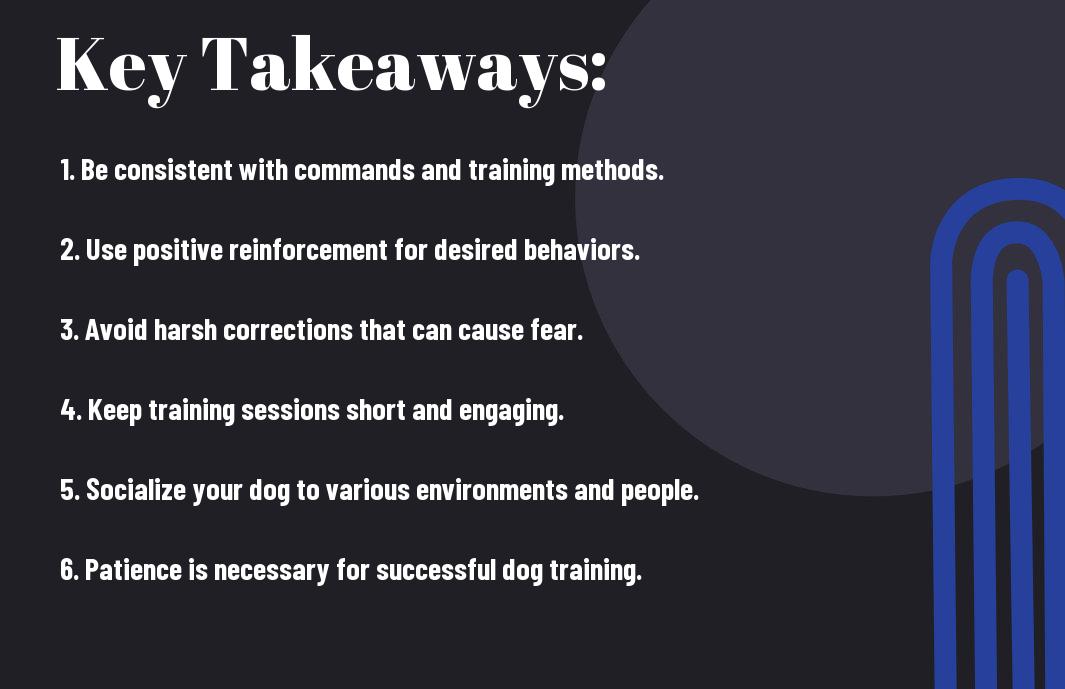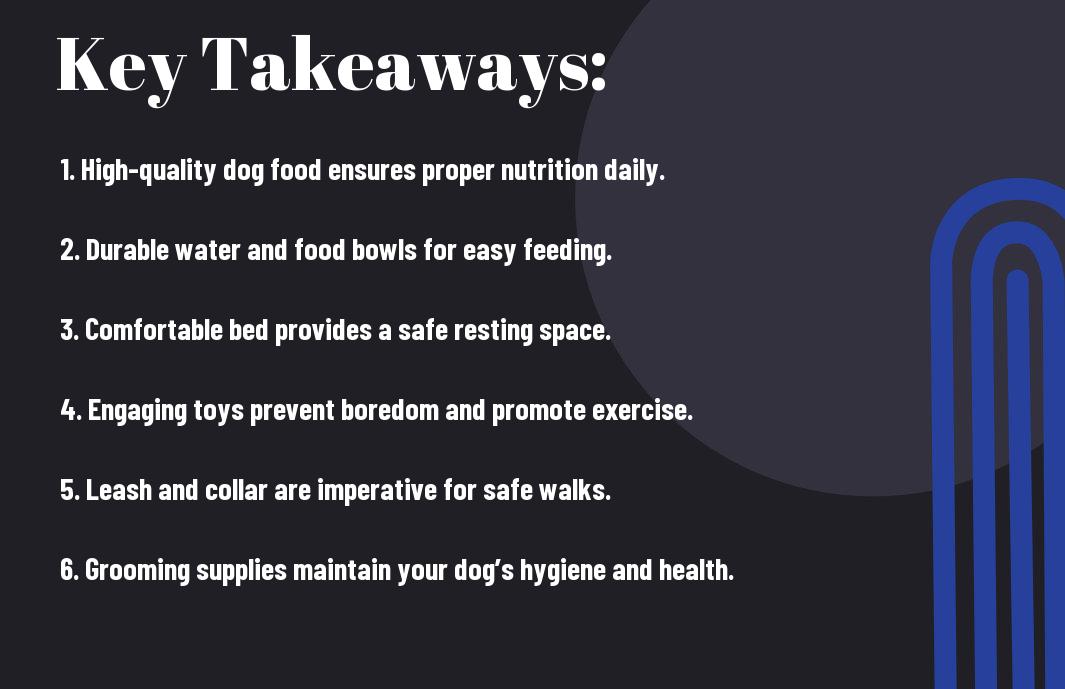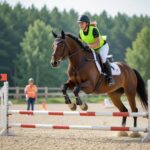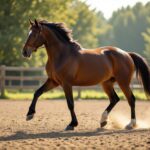Tips for training a new puppy involve understanding the unique needs of your furry friend and creating a consistent environment for learning. Begin with positive reinforcement to motivate your puppy; reward good behavior with treats or praise. Establish a regular schedule for meals, potty breaks, and training sessions to help your puppy thrive. It’s important to be patient and avoid punishment, as this can create fear and hinder progress. With dedication and the right approach, you’ll foster a strong bond and help your puppy become a well-behaved member of your family.
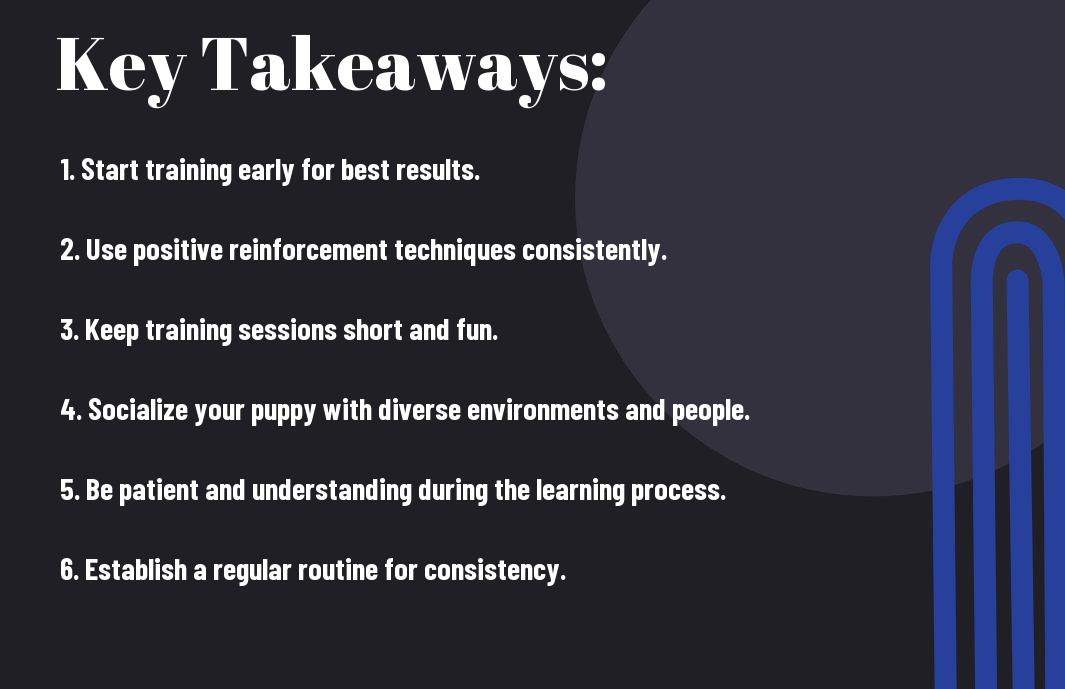
Understanding Puppy Behavior
While every puppy is unique, understanding the typical behaviors can significantly enhance your training experience. Puppies communicate through their actions, sounds, and body language. By taking the time to observe and interpret these signals, you can become more attuned to your puppy’s needs and emotions. This understanding not only fosters a stronger bond between the two of you but also aids in preventing potential behavioral problems in the future.
Socialization Importance
On top of basic training commands, socialization is one of the most important aspects of puppy education. Exposing your puppy to a variety of people, environments, and other animals early on can prevent fear-based behaviors and enhances their confidence. When socialized properly, your puppy will learn how to interact appropriately, reducing the likelihood of anxiety and aggression later in life.
Engaging in socialization should be a positive and gradual process. Take your puppy to different places like parks, pet stores, or friends’ houses, ensuring each experience is enjoyable and not overwhelming. This way, your puppy can learn to feel at ease in diverse situations, establishing good social manners that will serve them throughout their life.
Common Behavioral Issues
Behind the charming exterior of your new puppy, you might encounter various behavioral challenges that are common during the early stages of development. Issues like biting, chewing, excessive barking, and house training accidents can arise if not managed properly. Understanding the root causes of these behaviors is important to addressing them effectively.
Issues like separation anxiety can also occur if your puppy is not gradually acclimated to prolonged periods away from you. This can lead to destructive behavior when left alone. By identifying these common issues early and implementing appropriate training strategies, you will be setting up your puppy for a more well-adjusted life.
Puppy Body Language
To interpret your puppy’s feelings and state of mind, paying attention to their body language is vital. Different postures, tail movements, and facial expressions can indicate whether your puppy is feeling happy, anxious, or even intimidated. For instance, a wagging tail usually signals excitement, while a lowered body with tucked ears may indicate fear or submission. Being observant about these physical cues will help you respond appropriately to your puppy’s needs.
For instance, understanding that a puppy bouncing with a wiggly rear is happy to see you, while one who is balled up or hiding is trying to express discomfort, can help you adjust your approach. Learning to read these signals not only aids in improving your puppy’s behavior but also strengthens the bond you share by showing that you are attentive to their feelings.
Creating a Training Plan
Some people may think that training a new puppy is a spontaneous process, but having a structured training plan is necessary for your success. A well-thought-out plan provides a roadmap for you and your puppy, ensuring that you cover all the necessary commands and behaviors while also setting a positive tone for your relationship. Creating this foundation will not only help your puppy learn effectively but will also keep training sessions engaging and fun.
Setting Realistic Goals
After adopting a puppy, it is important to set realistic goals to guide your training. Puppies, like children, learn at varying paces, and expecting them to master advanced commands in a short timeframe can lead to frustration for both you and your furry friend. Start with simple tasks such as “sit,” “stay,” and “come,” and give yourself plenty of time—ideally a few weeks—to achieve each milestone before moving on to more complex commands.
Additionally, your goals should consider the unique personality and breed characteristics of your puppy. Some breeds are naturally more intelligent and may pick up commands quickly, while others may require extra patience and repetition. By understanding your puppy’s learning style, you can tailor your goals to be both achievable and beneficial for their development.
Choosing Training Methods
Along the journey of training your new puppy, selecting the appropriate methods is vital. Numerous training techniques are available, ranging from traditional to modern positive reinforcement methods. Emphasizing the use of positive reinforcement—rewarding good behavior with treats, praise, or playtime—often yields the best results. This method strengthens the bond between you and your puppy while encouraging them to repeat the desired behaviors.
Considering various methods is necessary as you evaluate which approach aligns with your values and your puppy’s needs. Some owners may prefer clicker training, which uses a sound to mark correct behaviors before applying rewards. Others might choose vocal commands and hand signals. The key is to find a technique that feels comfortable and effective for both you and your puppy, promoting a positive atmosphere throughout the training process.
Developing a Routine
Around your training plan, establishing a consistent routine is significant for your puppy’s success. Puppies thrive on predictability, and a structured schedule helps them understand when to expect training sessions, playtime, and bathroom breaks. By consistently training at the same time each day, you make it easier for your puppy to absorb information and understand when it’s time to learn versus when it’s time to relax.
It is also advantageous to incorporate short training sessions throughout the day rather than attempting long, exhaustive practices. You may find 5 to 10-minute sessions to be more effective, allowing your puppy to stay engaged and focused. This consistent routine provides a framework for learning and helps develop good habits early in your puppy’s life.
In addition, staying committed to your schedule and remaining flexible to adjust the training as needed will build your puppy’s confidence. Your patience and consistency will lead to a well-behaved companion, creating a mutually beneficial relationship.
Basic Commands Training
Now that you’ve welcomed your new puppy into your home, it’s imperative to start with basic command training. These commands form the foundation for good behavior and help in ensuring your puppy’s safety while also enhancing your bond. While training may require patience and consistency, the rewards are plentiful, and your puppy will be more manageable and well-adjusted.
Teaching Sit
On your journey to train your puppy, one of the first commands you should teach is “Sit.” This command is simple yet effective and serves as a building block for many other training activities. To begin, hold a treat close to your puppy’s nose, then slowly move your hand upwards. As your puppy follows the treat with their nose, their bottom will naturally lower to the ground. The moment they sit, say “Sit” firmly and give them the treat as a reward.
This process should be repeated several times a day in short sessions to reinforce learning. As you progress, try to allow your puppy to sit for longer before rewarding them. This will help you establish boundaries and expectations while also providing mental stimulation for your puppy.
Teaching Stay
Among the most important commands for your puppy is “Stay.” This command not only helps improve your puppy’s discipline but also significantly enhances their safety in various situations. To teach “Stay,” first get your puppy into the “Sit” position. Then, open your palm in front of you and say “Stay” in a clear, firm voice. Take a few steps back while being careful to maintain eye contact—if your puppy stays in place, return to them and reward with a treat.
The key to effectively teaching “Stay” is gradual progression and patience. Initially, reward your puppy for staying in place for just a few seconds. Over time, increase the distance and duration before rewarding them, which will challenge their focus and understanding of the command.
The strength of the “Stay” command lies in its versatility. You can use it in various scenarios, such as when guests enter your home or if your puppy’s curiosity leads them towards potential danger. Practicing in different environments helps your puppy generalize the command and understand its importance regardless of their surroundings.
Teaching Come
Beside ensuring your puppy knows basic commands, “Come” is particularly vital for their safety. This command ensures that your puppy returns to you promptly, which can be lifesaving in critical situations. To teach “Come,” start by using a leash, allowing your puppy to wander a short distance away. Then, call their name followed by “Come” in an enthusiastic voice. When they approach, reward them with treats and affection to create positive associations.
Make your training sessions fun and engaging by using a lively tone, as your excitement will encourage your puppy to respond quickly. Gradually decrease the leash length, allowing them to explore while still ensuring that they listen to your command.
Considering the broader implications of the “Come” command, it becomes an imperative tool in both everyday and emergency scenarios. Whether it’s navigating a crowded park or avoiding hazards during walks, this command helps maintain control over your puppy’s movements, ensuring their safety and your peace of mind. By fostering a strong response to “Come,” you empower your puppy to understand their limits while enjoying their freedom in a secure manner.

House Training Essentials
Unlike what many new puppy owners might think, house training your new furry companion is not just about taking them outside. It requires a combination of strategies, patience, and consistent effort to ensure that your puppy learns where and when it’s appropriate to do their business. Establishing a routine early on will significantly improve the chances of success in house training your pup.
Establishing a Schedule
An important aspect of house training is establishing a consistent schedule for potty breaks. Puppies have small bladders and may need to relieve themselves as often as every one to two hours, especially after meals, playtime, or naps. By taking your puppy out regularly, you give them ample opportunity to understand that going outside is the right choice. Be sure to take them out first thing in the morning, after meals, and right before bed to minimize accidents indoors.
In addition to scheduled potty breaks, keep a close eye on your puppy’s daily routine. Make note of their eating and drinking patterns, as well as their behavior before they need to go outside. This attentiveness will help you create a reasonable schedule that fits your puppy’s needs.
Recognizing Signs
One of the keys to house training involves recognizing the subtle signs that your puppy needs to go outside. Puppies may exhibit behaviors such as sniffing around restlessly, circling, or whining when they’re about to relieve themselves. Being attentive to these signs will help prevent accidents and reinforce the connection between your puppy’s needs and going outside.
Understanding your puppy’s individual signals is an integral part of the training process. Take note of how they act when they need to go, as these signals can vary between dogs. The sooner you respond to their signs, the more successful you will be in house training them and establishing a strong bond between you and your puppy.
Positive Reinforcement Techniques
Among the most effective methods for house training your puppy are positive reinforcement techniques. This means rewarding your puppy with treats, praise, or playtime immediately after they relieve themselves outside. Doing so reinforces the desired behavior and helps the puppy connect the positive experience with the action of going outside.
Utilizing positive reinforcement not only encourages your puppy to repeat the behavior but also strengthens your training bond. The key is to be consistent with your rewards; timing is everything, and your praise must come right after they do their business outdoors. This clear association will make the training process smoother and more enjoyable for both you and your puppy.
Even if accidents happen, it’s important to stay calm and avoid harsh corrections. Instead, direct your efforts towards celebrating successes and providing gentle guidance when needed. Encouraging and nurturing your puppy through house training will foster a trusting relationship, allowing for a happier and more harmonious home life.

Socialization Techniques
Once again, let’s research into the vital aspect of training your new puppy: socialization techniques. Proper socialization is important for ensuring your puppy grows up to be a well-adjusted, confident adult dog. It is important to expose your puppy to a variety of situations, environments, sounds, and other dogs and people to help them develop appropriate behaviors.
Introduction to New Environments
Against the backdrop of your home, your puppy needs to experience different environments that contribute to their overall socialization. Start by introducing your puppy to a range of settings, such as parks, shops, and even busy streets. By taking the time to acclimate your puppy to these new spaces, they will become more comfortable and less anxious in varying circumstances as they mature.
As you venture out with your puppy, make sure to offer plenty of positive reinforcement in the form of treats and praise. This will help your puppy associate new environments with positive experiences. Gradually increase the difficulty level of the environments you expose your puppy to, ensuring they can handle the stimulation before moving on to more complex settings.
Meeting Other Dogs and People
Environments rich in interactions can also significantly enhance your puppy’s social skills. Begin by allowing your puppy to meet well-behaved dogs and friendly people in controlled situations, such as puppy classes or playdates. Be observant and intervene if play becomes too rough or overwhelming for your puppy, teaching them how to communicate and play appropriately with others.
This approach will not only help your puppy learn social cues but will also boost their confidence. Always watch for signs of discomfort or stress, such as barking, growling, or cowering, which will indicate when your puppy may need a break or other adjustments to the meeting. Ensuring positive encounters will be key to fostering your puppy’s comfort around others.
Exposure to Various Sounds and Experiences
Environments filled with diverse sounds can be intimidating for some puppies. Gradually expose your puppy to everyday sounds, such as vacuum cleaners, doorbells, and traffic noises, in a safe and controlled manner. Begin at a distance, then slowly decrease the distance as your puppy becomes more comfortable with the noises. Associates these sounds with treats or playtime, reinforcing positive feelings toward them.
Even subtle sounds can be challenging for a new puppy, so patience is important. Utilize recordings of various sounds, and play them at low volumes, gradually increasing as your puppy shows comfort with each sound. This process will ensure your puppy develops a well-rounded disposition, capable of handling the multitude of noises they may encounter in daily life.
Addressing Behavioral Problems
All puppies come with their unique personalities, which can sometimes lead to behavioral challenges. It’s vital to address these issues early on to ensure your puppy develops into a well-mannered and happy adult dog. By implementing effective training strategies and maintaining consistency, you can positively influence your puppy’s behavior and create a harmonious environment for both of you.
Strategies for Jumping and Barking
Among the most common behavioral problems you may encounter are jumping and barking. Puppies often jump on people and bark excessively because they are excited or seeking attention. To combat jumping, it’s vital to ignore your puppy when they leap up; this means not giving them any attention until all four paws are on the ground. Once they settle down, you can offer praise or treats, reinforcing the behavior you wish to see. For barking, identify the cause, whether it’s noise, boredom, or loneliness, and circumvent it by engaging your puppy in interactive play or providing mental stimulation.
To effectively manage barking, you can teach your puppy the “quiet” command. This involves waiting for a pause in barking, saying “quiet,” and rewarding them with treats when they stop. Consistency and patience are key; your puppy needs to understand that quiet behavior is more rewarding than the noise they are making. Engaging them with toys or puzzles can also reduce boredom-induced barking.
Chewing and Destructiveness Solutions
Any puppy owner knows that chewing and destructiveness can be significant issues. Puppies explore their world with their mouths, and if left unchecked, they can cause damage to your belongings or even ingest harmful items. To curb this behavior, provide designated chew toys that are safe for your puppy. Whenever you catch your puppy chewing on something they shouldn’t, gently redirect them to an appropriate toy and praise them when they engage with it.
Establishing a safe space for your puppy is another effective way to mitigate chewing issues. Use baby gates or crates to confine your puppy to dog-proofed areas when you are unable to supervise them. This strategy not only protects your belongings but also helps your puppy understand which items are theirs and which ones are off-limits.
To further reduce chewing and destructiveness, ensure your puppy gets plenty of physical exercise and mental stimulation. Regular walks, play sessions, and training exercises can help burn off excess energy. Engaging toys and puzzles can also keep your puppy entertained, minimizing the temptation to chew on furniture or household items.
Fear and Anxiety Management
Against all odds, some puppies may struggle with fear and anxiety, which can lead to various behavioral issues if not addressed. It is important to identify the triggers that provoke fear or anxiety in your puppy and work on desensitizing them in a controlled manner. Gradual exposure to the trigger, paired with positive reinforcement, can help your puppy learn to cope in these situations. Calmly encouraging them with praise or treats when they react positively can significantly help alleviate their fears.
Providing a safe space, such as a cozy den or crate, can also make your puppy feel more secure. This area should be a quiet place where they can retreat when feeling overwhelmed. Making the environment around your puppy more predictable can also reduce anxiety, so consider establishing a routine for feeding, walks, and playtime to help your puppy gain confidence.
Destructiveness caused by fear often takes patience and understanding to resolve. Be sure to provide your puppy with plenty of love and reassurance during stressful situations. Engaging training that involves socialization with other dogs and people in a controlled environment can also help build their confidence and gradually reduce fear-based anxiety.
Conclusion
Conclusively, training a new puppy requires your patience, consistency, and effective communication. By establishing a daily routine, using positive reinforcement, and setting clear boundaries, you can foster a strong bond with your puppy while teaching them vital skills. Incorporating socialization and gradually introducing your puppy to different environments and experiences will help them develop into a well-adjusted adult dog. Stay engaged in the training process, and ensure that your puppy sees you as a reliable leader.
Furthermore, it’s beneficial to educate yourself about different training techniques and consult with professionals when needed. Each puppy is unique, and catering your approach to their specific needs will make a significant difference in their learning journey. Investing time and effort into effective training not only enhances your puppy’s behavior but also leads to a more enjoyable relationship between you and your furry companion. With these vital tips in mind, you are well on your way to raising a happy and obedient dog.
Q: What are the best methods for potty training a new puppy?
A: Potty training a new puppy requires patience and consistency. Start by establishing a designated potty area outside and take your puppy there frequently, especially after meals, naps, and play sessions. Use positive reinforcement, like treats and praise, immediately after they go potty outside. Crate training can also be beneficial, as dogs are less likely to soil their sleeping area. Make sure to maintain a regular feeding schedule to help predict when your puppy will need to go out.
Q: How can I socialize my new puppy effectively?
A: Socialization is key to raising a well-adjusted puppy. Begin exposing your puppy to various environments, people, and other dogs as soon as they are fully vaccinated. Arrange playdates with friendly dogs, visit dog parks, and take your puppy on outings to busy areas. Always supervise interactions and ensure they are positive experiences. Use treats and praise to reinforce good behavior during these socialization opportunities, helping your puppy to develop confidence and friendliness toward new situations.
Q: What commands should I teach my new puppy first?
A: Start with basic commands that provide a foundation for good behavior, such as “sit,” “stay,” “come,” and “down.” These commands are necessary for communication and control. Use positive reinforcement techniques, such as treats and verbal praise, to encourage your puppy when they successfully follow a command. Keep training sessions short and engaging—around 5-10 minutes—so your puppy remains focused and eager to learn. As your puppy masters these commands, you can gradually introduce more advanced tricks or behaviors.
